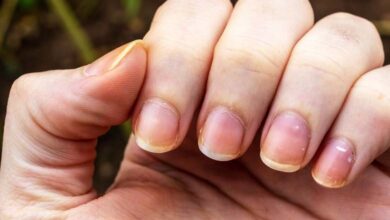The right things to do to protect your skin from the sun

The National Syndicate of Dermatologists-Venereologists is launching an online prevention campaign this Monday, June 13, under the hashtag #savesapeau. For this 24th edition, dermatologists point out some precautions to follow when you want to be exposed to the sun, especially with young children.
Among the essential actions to adopt, it is better to avoid exposure to the sun between 12 p.m. and 5 p.m. For the little ones, it is imperative to stay in the shade. “Repeated sunburn and exposure during childhood are a major cause of skin development in adulthood,” reports SNDV. A reflex that seems banal. And yet, more than 4 out of 5 French people go out in the sun between 12 p.m. and 4 p.m., according to an Ipsos survey conducted for the SNDV.
Specialists also point out the importance of protective clothing. A hat that covers the neck and ears, sunglasses, long-sleeved t-shirts. Regarding clothing, it is also recommended to wear dark colors and to favor anti-UV clothing (especially when swimming in hot weather). 57% of French people rarely or never wear a hat, the Ipsos survey tells us.
As for the sunscreen (index 50 and +), the SNDV recommends applying it every two hours at least to areas of the body not covered by clothing. “It is not because we apply sunscreen that we can expose ourselves longer,” warns the union. “Barely more than 1 in 2 French people often put sunscreen on the uncovered parts”, regrets the organization.
Regular self-examination
On average, each year, 15,500 new cases of skin cancer are diagnosed in France, leading to 1,800 deathsreports the National Cancer Institute.
However, skin cancer is one of the most curable, if detected in time. To do this, the organization advises to do a self-examination to spot any changes. You should not ignore hard-to-reach areas such as the back, the bottom of the feet or even the genitals.
Several signs can induce the consultation of a dermatologist. The appearance of brown spots on the epidermis for example. If a mole is unlike any other in shape, size, color or thickness, it is best to seek expert advice.
Because spotting a suspicious mole can be tricky, here’s the ABCDE rule. A for “asymmetrical”, B for “irregular edges”, C for “inhomogeneous color”, D for diameter (if the size increases) and E for “evolution”, if the mole changes rapidly, this should alert. “The manifestation of one or more of these signs does not necessarily mean the presence of melanoma, but justifies seeking medical advice without delay,” the organization said in a press release.












